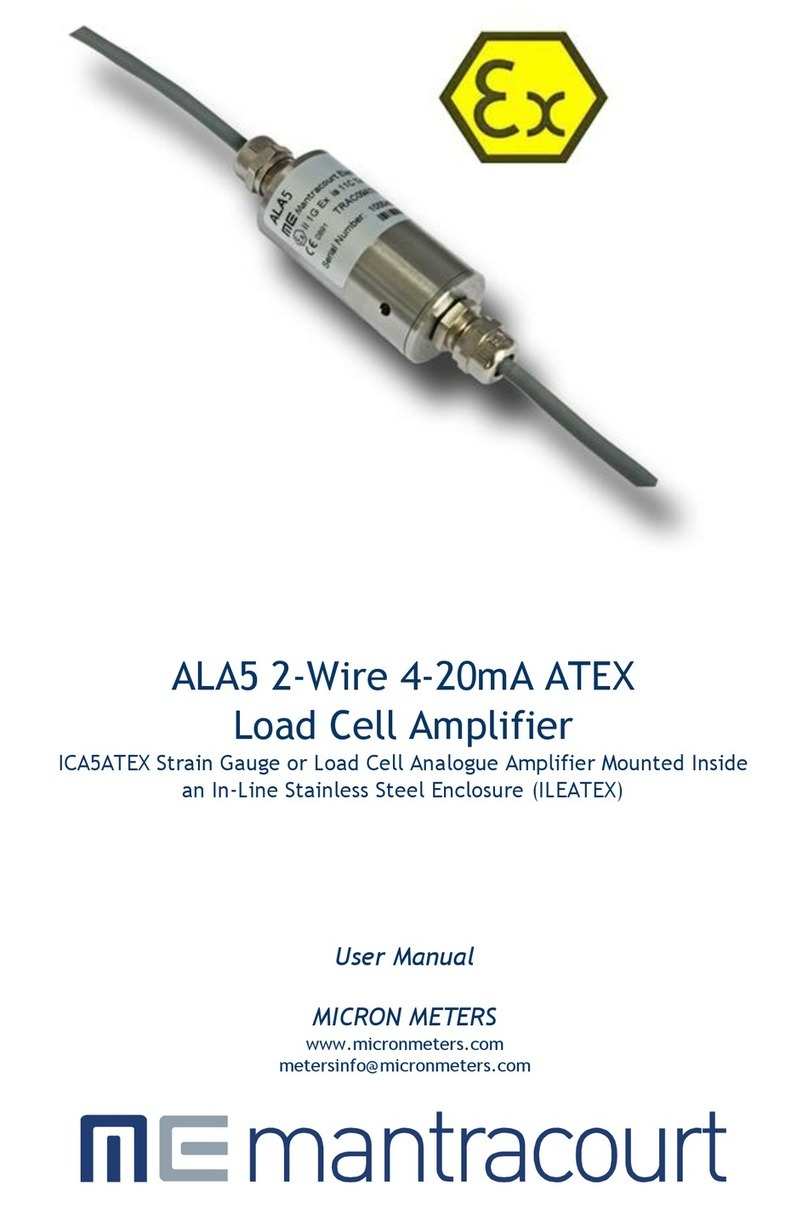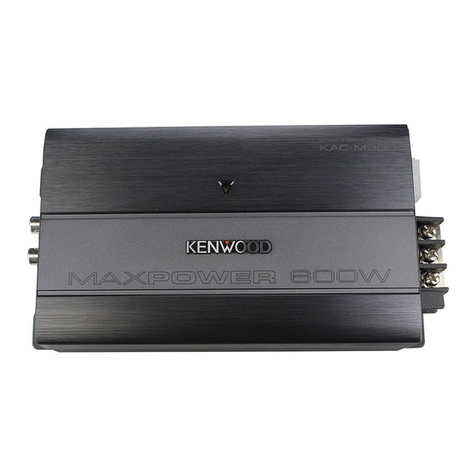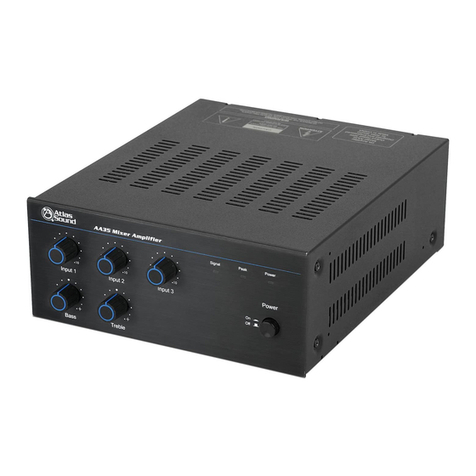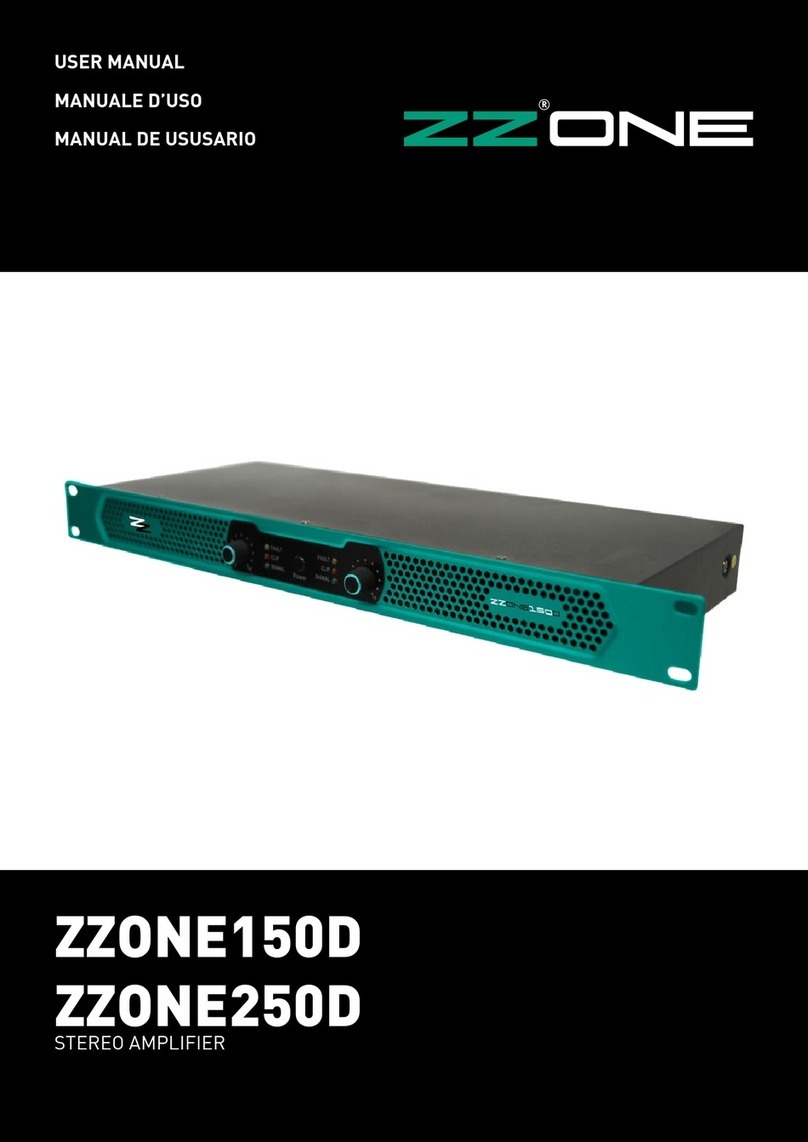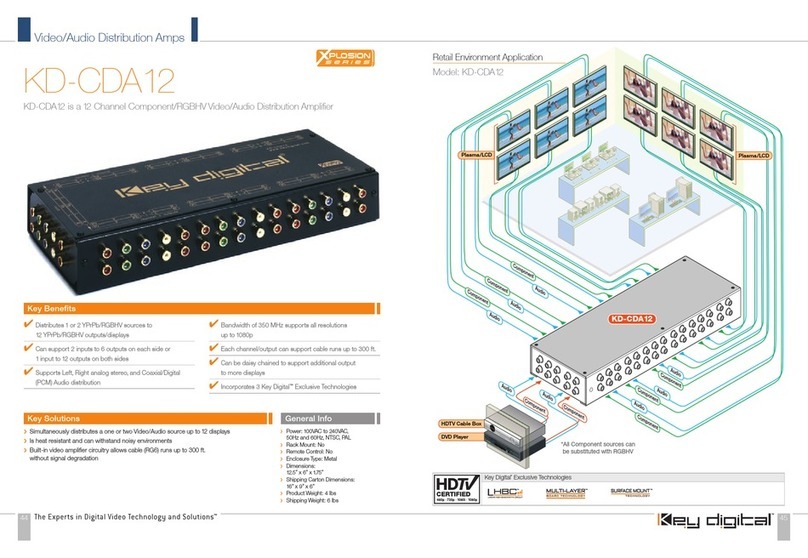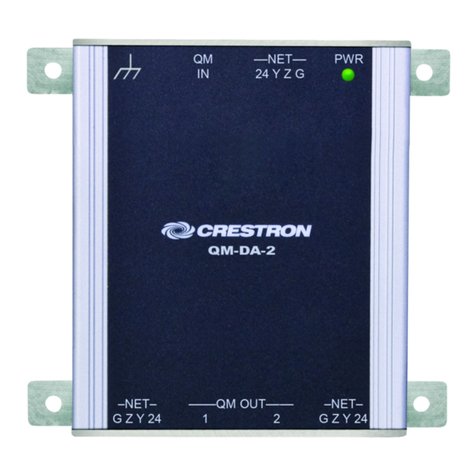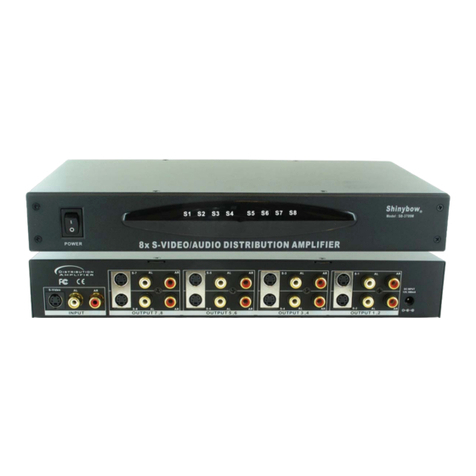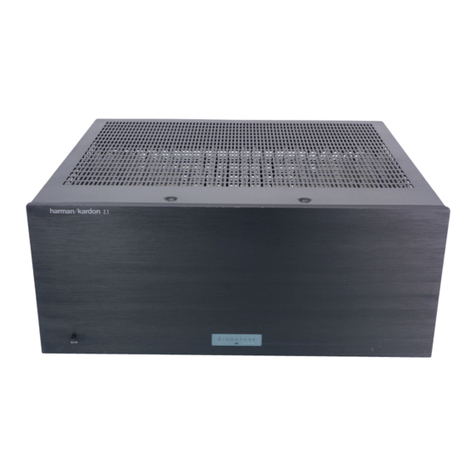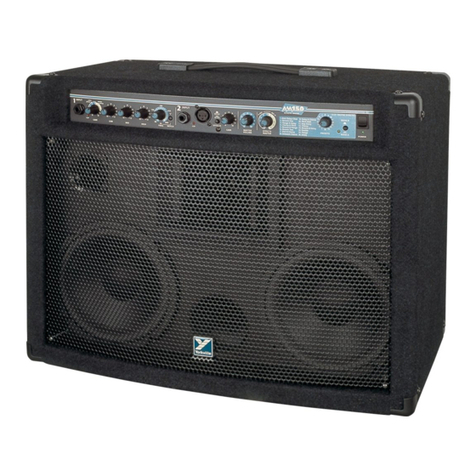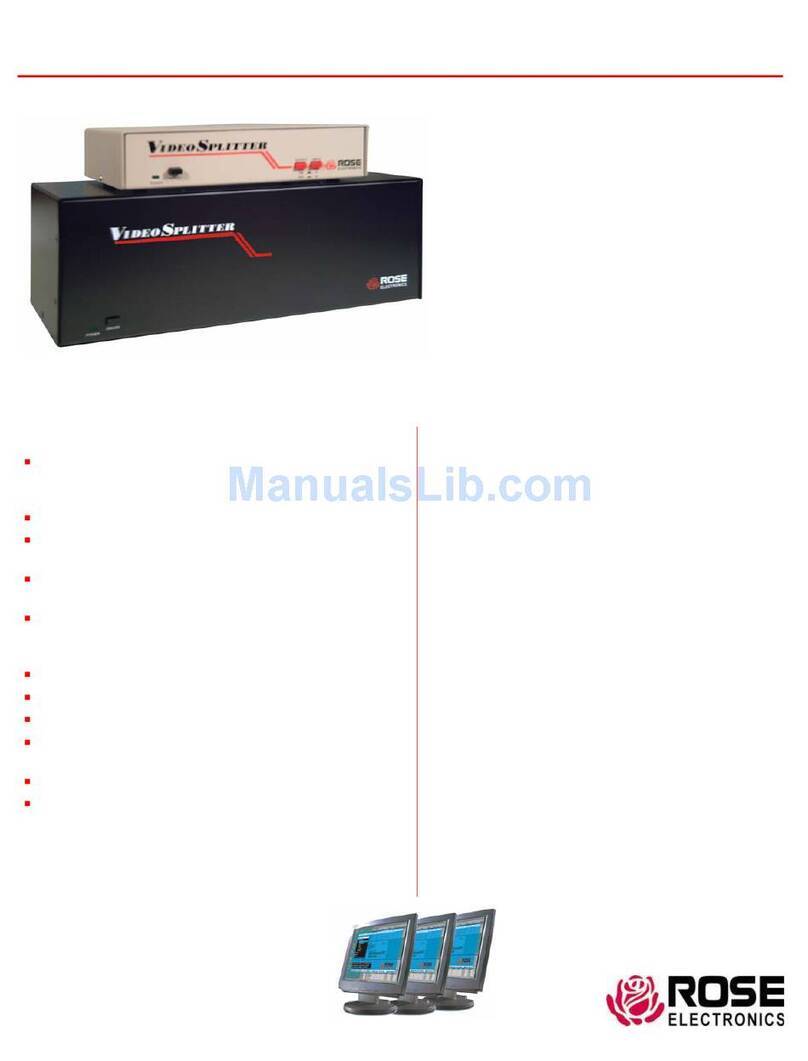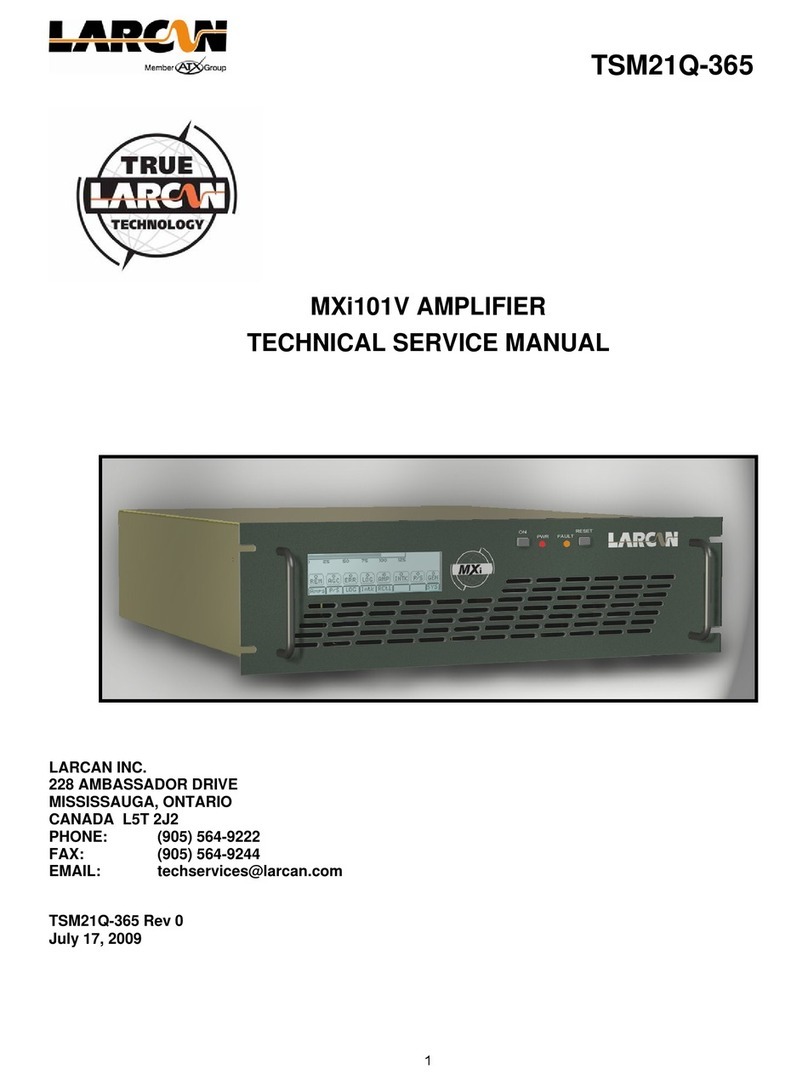Meggitt P702B User manual

Meggitt Sensing Systems
20511 Seneca Meadows Parkway, Germantown MD 20876, USA
Meggitt (Maryland), Inc d/b/a Meggitt Sensing Systems
Tel: +1 (301) 330-8811
Tel: +1 800 WILCOXON
Fax: +1 (301) 330-8873
www.meggittsensingsystems.com
www.meggitt.com
90589 Rev B.3 4/13
Wilcoxon Research P702B/P702BF-1 operating guide
Power unit/amplifier for piezoelectric transducers with internal amplifiers
Caution: This manual should be read carefully before installation.

90589 Rev B.3 4/13 Page 2 of 12
Contents
1.0 Introduction 3
2.0 Description 3
3.0 Operation 3
3.1 Theory of operation 3
3.2 Inspection 4
3.3 Preparation for use 4
3.4 Use in measurement system 5
3.5 Filtering 6
3.6 Precaution in use 6
4.0 Maintenance and troubleshooting 6
4.1 Battery replacement 6
4.2 Initial checks 6
4.3 FAULT monitor 7
4.4 Electrical calibration 7
5.0 Accessories and options 8
6.0 Technical assistance 8
6.1 Technical assistance 8
6.2 Customer service 8
Appendix 9

90589 Rev B.3 4/13 Page 3 of 12
1.0 Introduction
The P702B power unit/amplifier is a portable power source with integral signal conditioning for use with
internally amplified accelerometers. Signal conditioning includes amplification, integration and fault
indication.
2.0 Description
The P702B power unit/amplifier is a portable unit specifically designed to furnish 2.4 mA constant DC
current (+27 VDC) necessary to operate the internal charge amplifiers of Meggitt Sensing Systems and
similar piezoelectric transducers (accelerometers and velocity sensors.) In addition the P702B provides
signal conditioning, includes features such as selectable gain levels of 1, 10, 100, extremely low-noise,
integration to yield velocity output, battery condition indication, and visible overload or open/shorted cable
indication. This gives the test engineer broad capabilities for the accurate measurement and recording of
vibration signals over a wide range of test situations. Also virtually any high impedance charge-type
accelerometer can be operated with the P702B with the addition optional charge converter accessory,
CC701. The P702B also has built-in ESD protection to guard against damage of the internal electronics.
All switches and controls are on the front panel. Transducer input and output BNC connectors are
located on the rear panel, as is a connector for the optional line adapter/charger, See Figure 1 in the
appendix.
The P702BF-1 is identical to P702B, except that the frequency response of the P702BF-1 is specified as
–3 dB from 0.5 Hz to 20 kHz (versus 0.5 Hz to 50 kHz for the P702B) in acceleration mode. Other than
the high end frequency response, the P702BF-1 is identical to the P702B in terms of operation,
maintenance and troubleshooting.
3.0 Operation
3.1 Theory of operation
The P702B power unit/amplifier consists of the major circuits and components shown in Figure 2 in the
appendix. Panel functions are shown in Figure 1. The power module provides + 27 VDC through an
internal 2.4 mA (other values between 2.0 and 10 mA can be furnished on request) constant current
diode to the transducer, as well as the DC excitation for the selectable gain amplifier, the fault indicator
circuit, and the integrating circuit.
The power is normally supplied from the three internal 9 volt batteries. When the optional LA704 Line
Adaptor is used, the internal batteries are automatically disconnected when the adaptor’s output cable is
plugged into the power jack on the rear of the P702B unit. See Figure 3 in the appendix for correct
jumper placement.
The vibration signal fed into the P702B Transducer input connector passes through a low pass filter
(optional) and to the first gain stage which amplifies the signal by X1 or X10 according to the gain switch
setting. The signal is split and one path is routed to an integrating amplifier to become an output signal
proportional to velocity (mV/in/sec). It then rejoins the non-integrated signal at the ACCeleration/VELocity
selector switch. When the switch is in the ACCeleration position, the signal goes directly to the second

90589 Rev B.3 4/13 Page 4 of 12
stage gain amplifier which can introduce an additional X1 or X10 gain. By using different combinations of
first and second stage gains, the output can be set for gains of X1, X10 or X100.
The fault monitoring circuit is built around a dual comparator which senses the DC voltage supplied to the
transducer’s internal amplifier. The comparator circuit is of the window type and when the transducer’s
bias output voltage exceeds the normal range, 6-16 VDC, depending on the transducer type, it illuminates
the FAULT indicator. Abnormal voltages which can be caused by extended signal overloads within the
transducer’s internal charge amplifier may trip the circuit. Normally, small transients will not cause the
fault indicator to light as it has a rather long time constant to prevent low frequency, high amplitude
signals from causing the indicator to illuminate erroneously.
The P702B can be supplied by the factory with an optional 6 dB per octave roll-off RC low-pass filter
incorporated into the amplifier.
3.2 Inspection
After carefully unpacking the P702B power unit/amplifier, inspect the external parts for damage to
switches, indicators and connectors. If there is damage, file a claim with the carrier who transported the
instrument. Retain the shipping container and packing material for use in case reshipment is required.
3.3 Preparation for use
Depress toggle the ON-OFF-BATT power switch to the BATT momentary contact position. The battery
condition indicator should show a steady green light. Release switch. Connect the proper cable to the
TRANSDUCER input connector on the P702B and to the transducer to be powered. This cable should be
free of kinks and cable connectors should be clean. Connect a coaxial cable to the output BNC
connector on the rear panel of the P702B and to the readout or recording instrument.
If the optional line adaptor (LA704) is to be used, plug the adaptor’s output cable into the jack on the rear
panel of the P702B. Then plug the line cord of the adaptor into a source of 110 V 50/60 Hz power (or 220
V 50/60 Hz for the LA704-220). Internal batteries of the P702B are now disconnected (with Ni-Cd jumper
in the alkaline position) and the unit can be operated from the power line via the LA704.
Note: For units factory equipped with Ni-Cd batteries (or if the unit has been modified with the NC3 Ni-Cd
kit) there is an internal jumper near the batteries that must be set to the correct position for charging the
Ni-Cd batteries.
Note:On units with the Ni-Cd battery option, a jumper inside the unit needs to be set so that the batteries
may be charged by the LA704 line adapter. DO NOT USE ALKALINE BATTERIES IN THE P702B WITH
THE JUMPER SET TO THE Ni-Cd POSITION! Alkaline batteries are not rechargeable and may explode
and/or cause a fire if the jumper is set incorrectly and the line adapter is connected to the P702B.

90589 Rev B.3 4/13 Page 5 of 12
3.4 Use in measurement system
After the vibration measuring system (consisting of the P702B power unit/amplifier, accelerometer,
readout instrument and connecting cables) is prepared as discussed above, the following procedure is
recommended to put the system into operation.
Set the gain range switch to the desired value of 1, 10, or 100 depending on the acceleration range or the
velocity range and the sensitivity of the accelerometer. The output of the P702B is limited to 6 Volts, so
this will limit the output for any sensitivity/gain combination.
For vibration measurements in ‘g’ values, use an accelerometer as the input. Set the
ACCeleration/VELocity switch to the ACC position. For a typical Wilcoxon Research accelerometer (like
model 793, with a sensitivity of 100 mV/g) a 10g vibration level would produce a 1 Volt output at the
sensor.
The formula for this is Vout = sensitivity x vibration level x gain (assuming no integration). In this example,
the output voltage is calculated as follows:
Sensitivity = 0.100 Volts (100 mV)
Vibration level = 10g
Gain = X1
Vout = 0.100 x 10 x 1 = 1 Volt
If Vout exceeds 6 Volts, the red FAULT indicator will light. If all other reasons for the fault have been
eliminated (see sections 3.1 and 4.3) the cause may be:
Too much gain selected on the P702B, and/or
In the lowest gain setting (X1), a less sensitive accelerometer may be required to lower the
output voltage fed to the P702B so the output voltage drops below 6 Volts.
If a signal proportional to velocity is desired, set the ACCeleration/VELocity switch to VEL. In this
position, the input signal is integrated to velocity with a calibrated output sensitivity of 100 mV/in/sec for a
100 mV/g accelerometer.
If a velocity transducer is the input to the P702B with the selector switch in the ACCeleration (no
integration) position, the output will be proportional to velocity with a sensitivity equal to the sensitivity of
the velocity transducer. Gains of X10 and X100 may be applied to this signal as long as the output
voltage of the P702B does not exceed 6 Volts.
If the selector switch is set to velocity (single integration) with a velocity transducer as the input signal, the
output will be proportional to displacement. For a 100 mV/in/sec velocity transducer, the calibrated output
sensitivity of the P702B will be 38.6 mV/mil.
Note: If the P702B power unit/amplifier is to be used in connection with a high Impedance charge-type
accelerometer rather than the internally amplified transducers, a charge converter accessory (CC701) is
required. The specifications of the CC701 should be consulted to insure compatibility with the selected
accelerometer.
Note: If the P702B power unit/amplifier is to be used with another accelerometer with integral amplifier
(not a Wilcoxon Research type), its specifications must be compatible with those of the P702B.

90589 Rev B.3 4/13 Page 6 of 12
3.5 Filtering
The P702B power unit/amplifier can be supplied with a low-pass filter on special order.
The P702BF-1 is supplied with 20kHz low pass filter that gives a system response that meets MIL 740-2
when paired with a WR 742TF-1 or 726TF-1 accelerometer.
3.6 Precaution in use
The P702B should not be subjected to environments in excess of its specified temperature and humidity
ranges. It should be protected from condensation and corrosive atmospheres.
4.0 Maintenance and troubleshooting
The P702B power unit/amplifier is fully adjusted and ready to operate when received from Wilcoxon
Research. A new set of 9 volt alkaline batteries are mounted in the unit. Typically, the batteries have an
operational life of greater than 80 hours.
4.1 Battery replacement
Batteries need replacement when the battery condition indicator no longer glows as the ON/OFF/BATT
switch is depressed to the BATT position. Turn the P702B upside down, remove the four retaining
screws in the cover bottom and carefully slide the chassis out from the cover box. The batteries are
located inside supported on three sides by the PCB and resting on a foam pad. Simply unplug the snap-
on connectors and plug in the new batteries. Replace them in the cutout in the PCB, slide chassis back
in to cover box and replace the four retaining screws. Check the battery condition indicator to make sure
the new batteries function correctly.
4.2 Initial checks
Depress ON-OFF-BATT power switch to BATT position. The battery condition indicator should show a
steady green light. Release switch. Connect the proper cable to the TRANSDUCER input BNC on the
P702B and to the transducer to be powered. This cable should be free of kinks and cable connectors
should be clean. Connect a coaxial cable to the output BNC connector on the rear panel of the P702B
and to the readout or recording instrument. For the initial checks, a T-connector may be placed on the
TRANSDUCER BNC and the accelerometer cable connector to one side of the T-connector. The other
side is left open.
Set ON-OFF-BATT power switch to ON. The FAULT monitor light will glow red during the approximately
20 second warm-up time of the P702B. If this monitor continues to glow, the transducer and its cable
should be carefully checked to locate and correct the fault. If the monitor ceases to glow, indicating
correct operation, the open end of the T-connector should be shorted by connecting a short wire from
connector center to shell. The FAULT monitor should make the glowing stop. Disconnect the cable to
the transducer. The FAULT monitor should now glow again to indicate the presence of the open cable.
Reconnecting the cable should make the glowing stop. The system is now ready for operation. The T-
connector may be left in place or removed.
If the optional line adaptor (LA704) is to be used, plug the adaptor’s output cable into the jack on the rear
panel of the P702B. Then plug the line cord of the adaptor into a source of 110 V 50/60 Hz power (or 220

90589 Rev B.3 4/13 Page 7 of 12
V 50/60 Hz for the LA704-220). Internal batteries of the P702B are now disconnected and the unit is
operated from the power line.
Note: The tests above apply whenever the unit is powered by its internal batteries (Alkaline or NI-CD) or
from the line adaptor.
4.3 FAULT monitor
If the FAULT monitor signal light glows red (after the 20 second warm-up period), the measurement
system should be carefully checked to see if any of these seven conditions exist:
Accelerometer is not connected
Accelerometer has internal open connection
Accelerometer has internal short.
Cable assembly has internal connection (break)
Cable assembly has internal short
Accelerometer’s internal amplifier is overload
Optional charge converter (CC701) is malfunctioning/overloaded
If none of these faults appear to be present, but the fault monitor continues to glow, the easiest way to
check is to substitute another P702B unit (known to be in good working condition) in the measurement
system. If this restores proper operation, the original P702B is malfunctioning and should be returned to
the factory for repair.
4.4 Electrical calibration
The validity of the measurements performed by the vibration measurement system depends on the
continuing proper function of the P702B power unit/amplifier. We recommend that an electrical
calibration of the measurement system be performed regularly (once a year) or before any extensive
series of vibration measurements.
An electrical signal should be substituted for the accelerometer signal for the purpose of calibration. The
output of a sinusoidal signal generator at a recommended frequency of 100 Hz is fed through an RC
network into the TRANSDUCER input connector of the P702B. This network consists of a 100 MF
capacitor in series with the input, and a 4.7 KΩresistor across the input. The signal generator is set to
produce an output signal amplitude of 1 V rms On the P702B and will vary according to GAIN switch
setting. To verify gain, divide the voltage at the P702B’s output BNC by the voltage at the P702B’s
TRANSDUCER input BNC.
See Figure 4. The P702B may also be returned to Meggitt Sensing Systems for recalibration.

90589 Rev B.3 4/13 Page 8 of 12
5.0 Accessories and options
LA704 line adaptor
The LA704 wall plug-type adaptor supplies regulated 27 VDC power to the P702B from a 108 to 120 Vac,
50 to 60 Hz power line.
LA 704-220 line adaptor
The LA704-220 is similar in operation to the LA704 but is a slightly larger desktop unit for use in Europe
and other countries that have 220 V, 50 to 60 Hz power line. The output cord mates with and supplies 27
VDC to the P702B unit. The input cord is a pigtail fitted with the IEC 320 connector for maximum
flexibility. It is the user’s responsibility to supply the required cord to conform with local standards.
CC701 charge converter
The CC701 contains a low-noise PiezoFET® amplifier which converts a high impedance signal from a
charge-type accelerometer to a low impedance, voltage signal compatible with the P702B. The charge
amplifier circuit in the CC701 allows it to be located near the accelerometer or connected directly to the
TRANSDUCER input connector of the P702B.
6.0 Technical assistance
6.1 Technical assistance
For technical assistance, please contact Meggitt Sensing Systems at 301-330-8811 or email
wilcoxon@meggitt.com.
6.2 Customer service
To obtain a return goods authorization number, please contact customer service at 301-330-8811, or fax
301-330-8873.

90589 Rev B.3 4/13 Page 9 of 12
Appendix
Figure 1 –Panel functions
POWER UNIT/AMPLIFIER
MODELP702B
ON
OFF
BATT
FAULT ACC
VEL
X1
X10
X100
TRANSDUCER OUTPUT
EXTERNALSUPPLY
CHARGE IN
1
2
3
4
5
678
1. ON-OFF-BATT power switch
5. GAIN range switch
2. BATTery condition indicator: green LED
6. TRANSDUCER Input jack (BNC)
3. Circuit FAULT monitor: red LED
7. CHARGE INput jack (for optional LA704 line adaptor)
4. ACCeleration/VELocity selector switch
8. OUTPUT jack (BNC)

90589 Rev B.3 4/13 Page 10 of 12
Figure 2 –P702B circuits and components
+
POWER
SOURCE
+27VDC
CONSTANT
CURRENT
SOURCE
LOW PASS
FILTER
LOW PASS
FILTER
LOW PASS
FILTER
(OPTIONAL)
INTEGRATOR
WINDOW
COMPARATOR
REFERENCE
VOLTAGES
BATTERY
TEST
CIRCUIT
HIGH PASS
FILTER
DECOUPLING
8
1
2
4
3
5 5
6
7
POWER
SWITCH
VELOCITY
SWITCH
ACCELERATION
FROMCHARGE
INPUTJACK
INTERNAL
BATTERIES
TO AMPLIFIER
CIRCUITS
INPUTBNC
OUTPUTBNC
TRANSDUCER
SIGNAL
+
B+
GAIN
SWITCH SWITCH
GAIN
(OPTIONAL)
(OPTIONAL)
OPTIONAL

90589 Rev B.3 4/13 Page 11 of 12
Figure 3 –Jumper placement
NI-CAD
J4
J4
OR
ALKALINE

90589 Rev B.3 4/13 Page 12 of 12
Figure 4 –Electrical calibration test set-up
+
100 F, 35VDC
4.7k
FROM
OSCILLATOR TO P702B
100 Fd +
LEADER
ATTENUATOR
POWER
LAG120B AUDIO GENERATOR
Hz
OUTPUT
FREQ RANGE
X10
X100
X1K
X10K
X100K
600
1
1.5
2
2.5 34
5
6
7
8
9
10
TRANSDUCER OUTPUT
EXTERNAL SUPPLY
CHARGEIN
SCHEMATIC
4.7k
Ω
Ω
100μF, 35VDC
100 μFd
4.7kΩ
This manual suits for next models
1
Table of contents

